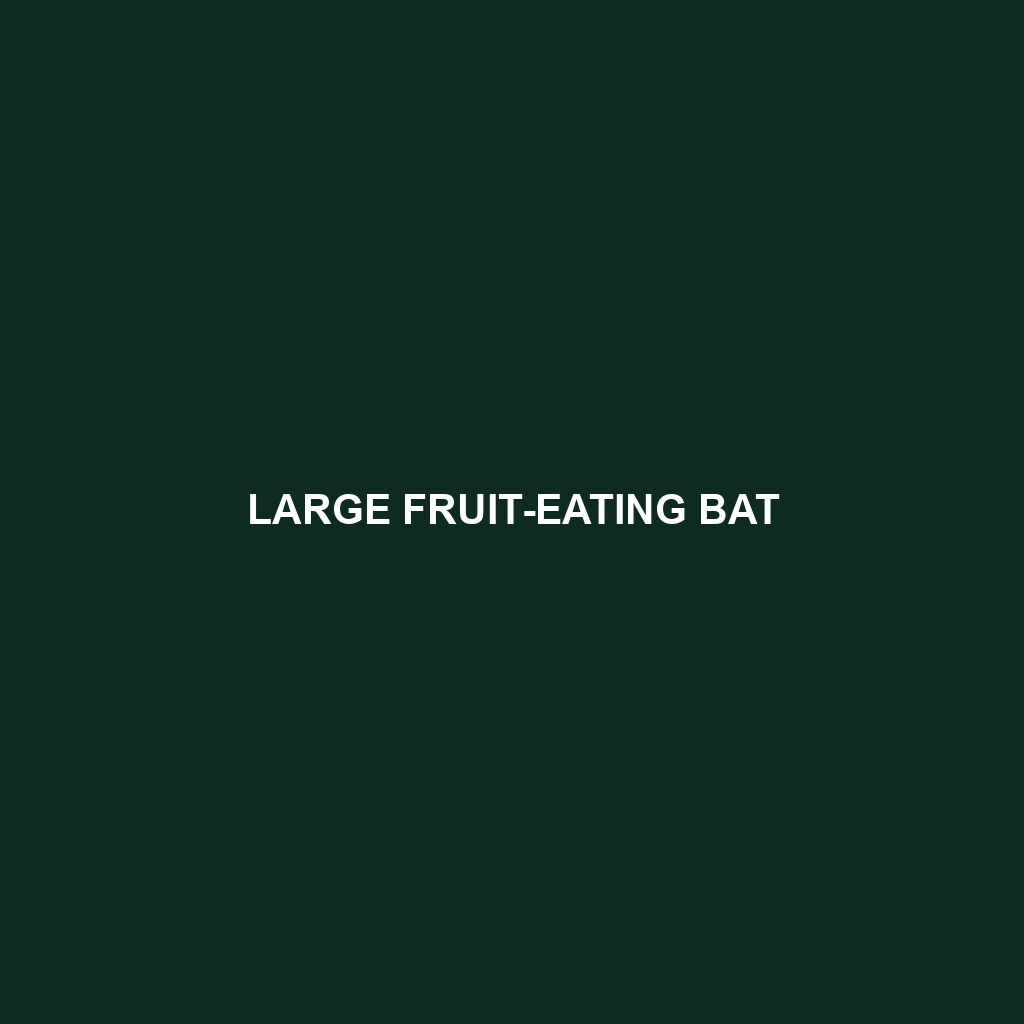Ecuadorian Fruit-eating Bat
Common Name: Ecuadorian Fruit-eating Bat
Scientific Name: Artibeus aequatorialis
Habitat
The Ecuadorian Fruit-eating Bat primarily inhabits tropical and subtropical rainforests in Ecuador and parts of the northern Andes. These bats are often found in lowland and montane forests, thriving in areas rich in fruiting trees, making the lush biodiversity of the Amazon Basin an ideal environment for them.
Physical Characteristics
The Ecuadorian Fruit-eating Bat is medium-sized, with a wingspan of approximately 30 to 40 cm. Their fur is generally soft and can range from light brown to dark reddish-brown, with lighter underparts. A distinctive feature of this species is its large ears and wide wings, which enable greater maneuverability while foraging for fruits.
Behavior
Ecuadorian Fruit-eating Bats exhibit nocturnal behaviors, primarily becoming active after sunset. They are social creatures, often roosting in large colonies that can number in the thousands. These bats are known for their agile flight patterns, which they use to navigate through dense vegetation while locating fruits and flowers.
Diet
As frugivores, Ecuadorian Fruit-eating Bats predominantly feed on a variety of fruits, including figs, bananas, and guavas. Their feeding habits play a vital role in seed dispersal, making them essential for the health of their ecosystems. These bats have a unique ability to locate ripe fruits based on aroma and ripeness.
Reproduction
The reproductive habits of the Ecuadorian Fruit-eating Bat typically involve a breeding season that spans spring to early summer. After a gestation period of about 3 months, females give birth to a single pup. Mothers often exhibit nurturing behaviors, such as grooming and protecting their young as they learn to fly and forage.
Conservation Status
The Ecuadorian Fruit-eating Bat is classified as “Vulnerable” due to habitat loss driven by deforestation and agricultural expansion. Conservation efforts are crucial to protect their natural habitats and ensure the survival of this important species in the ecosystem.
Interesting Facts
– Ecuadorian Fruit-eating Bats are known for their echolocation abilities, which they use to navigate in the dark.
– They can consume up to their body weight in fruit each night, providing significant contributions to seed dispersal.
Role in Ecosystem
The Ecuadorian Fruit-eating Bat plays a critical role in maintaining the health of its ecosystem through seed dispersal. By consuming fruits and excreting the seeds in different locations, they contribute to forest regeneration and plant diversity, making them an essential part of the ecological balance in their habitat.
